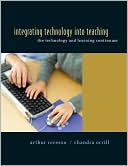Category Books
- Fiction Books & Literature
- Graphic Novels
- Horror
- Mystery & Crime
- Poetry
- Romance Books
- Science Fiction & Fantasy
- Thrillers
- Westerns
- Ages 0-2
- Ages 3-5
- Ages 6-8
- Ages 9-12
- Teens
- Children's Books
- African Americans
- Antiques & Collectibles
- Art, Architecture & Photography
- Bibles & Bible Studies
- Biography
- Business Books
- Christianity
- Computer Books & Technology Books
- Cookbooks, Food & Wine
- Crafts & Hobbies Books
- Education & Teaching
- Engineering
- Entertainment
- Foreign Languages
- Game Books
- Gay & Lesbian
- Health Books, Diet & Fitness Books
- History
- Home & Garden
- Humor Books
- Judaism & Judaica
- Law
- Medical Books
- New Age & Spirituality
- Nonfiction
- Parenting & Family
- Pets
- Philosophy
- Political Books & Current Events Books
- Psychology & Psychotherapy
- Reference
- Religion Books
- Science & Nature
- Self Improvement
- Sex & Relationships
- Social Sciences
- Sports & Adventure
- Study Guides & Test Prep
- Travel
- True Crime
- Weddings
- Women's Studies
Integrating Technology into Teaching: The Technology and Learning Continuum » (1st Edition)

Authors: Arthur Recesso, Chandra Orrill
ISBN-13: 9780618370832, ISBN-10: 0618370838
Format: Paperback
Publisher: Cengage Learning
Date Published: April 2007
Edition: 1st Edition
Author Biography: Arthur Recesso
Art Recesso received a Ph.D. in Education Administration and Policy Studies from the State University of New York, Albany. He is a former K-12 educator, having served in the role of Director of School-to-Work programs and Team Leader for integrating technology into leading, teaching and learning. Dr. Recesso's research centers on evidence-based methods and tools for decision-making. He is currently a Research Scientist in the Learning & Performance Support Laboratory at the University of Georgia. His most recent efforts involve developing a four-stage systematic methodology to support assessment and improvement in performance, practice, and organization structures. The methodology has been initiated in the Video Analysis Tool (VAT), a web-based system that enables users to collect evidence from remote locations, interpret it and take a course of action. The evidence-based methods and tools are currently being used in teacher preparation, leadership supervision, and assessment of teacher practices to support growth and development.
Chandra Orrill received her Ph.D. in Instructional Systems Technology from Indiana University. She has done extensive teacher professional development on topics related to technology integration for several years. Dr. Orrill is currently a Research Scientist in the Learning and Performance Support Laboratory at the University of Georgia where her research focuses on professional development. Dr. Orrill's current research interest is on understanding how teachers make sense of professional development and the impact the professional development has on classroom practice. Her efforts include the ongoing design and refinement of a professional development program focused, in part, on integrating technology into mathematics classrooms and the development of research methods for understanding the relationship between professional development and teacher practice in a technology-rich professional development experience.
Book Synopsis
Developed by a highly qualified author team, this new textbook is designed for an introduction to instructional technology course taken by education majors. The goals of the text and its companion web site are to enable faculty to teach the fundamentals of hardware and software, and more important, to educate their students about how technology can be integrated into instruction. Using the text and web site, students learn to apply knowledge from their content methods courses and learn how to incorporate technology to promote effective instruction.What sets this text apart is its teacher-tested model, The Technology and Learning Continuum Model (TLC), which bridges the gap between educational technology and instructional design. In use by Recesso for more than six years, the model grew out of a Preparing Tomorrow's Teachers to Use Technology (PT3) grant and is being used currently in Georgia to meet the state-mandated requirement that all teachers complete a technology certification program by 2006. The model, however, is not state-specific.Using the 4-color model as a guide, students are able to move beyond awareness of instructional and assistive technology to advanced levels of technology integration. In a structured fashion, pre-service or in-service teachers learn how to align learning activities, objectives, instructional strategies, technology, and assessments to facilitate a progression of student learning. The results are learning units and learning activities where technology is integrated, not used as an add-on, and lesson plans that prospective or current teachers can take into the classroom and effectively use as a guide to instruction. Another important feature of this program is its close alignment with the prevailing technology standards. In these standards-driven times, showing explicitly how content ties to standards is critical.
Table of Contents
Note: Each chapter begins with "Standards to Guide Your Preparation" and concludes with a Summary, Resources, and "Meet the Standards." I. Technology and the Learning Environment 1. Introduction to Technology Integration Why Write a Book About Technology Integration? Goals of This Book Visions of Technology Use: A Showcase of Theorists Case Study: The NECC Conference 2. Learner-Centered Classrooms What Is a Learning Environment? Kinds of Technology-Rich Learning Environments Case Study: Four Classrooms 3.
Subjects
 Teaching & Teacher Training
Teaching & Teacher Training  Computers & Technology in Education
Computers & Technology in EducationEducation & Teaching
 Teaching & Teacher Training
Teaching & Teacher Training  Educational Aspects of Technology
Educational Aspects of TechnologyEducation & Teaching
 Teaching & Teacher Training
Teaching & Teacher Training  Teaching Aids & Devices
Teaching Aids & DevicesEngineering
 Social & Cultural Aspects of Technology
Social & Cultural Aspects of Technology  Educational Aspects of Technology
Educational Aspects of Technology
